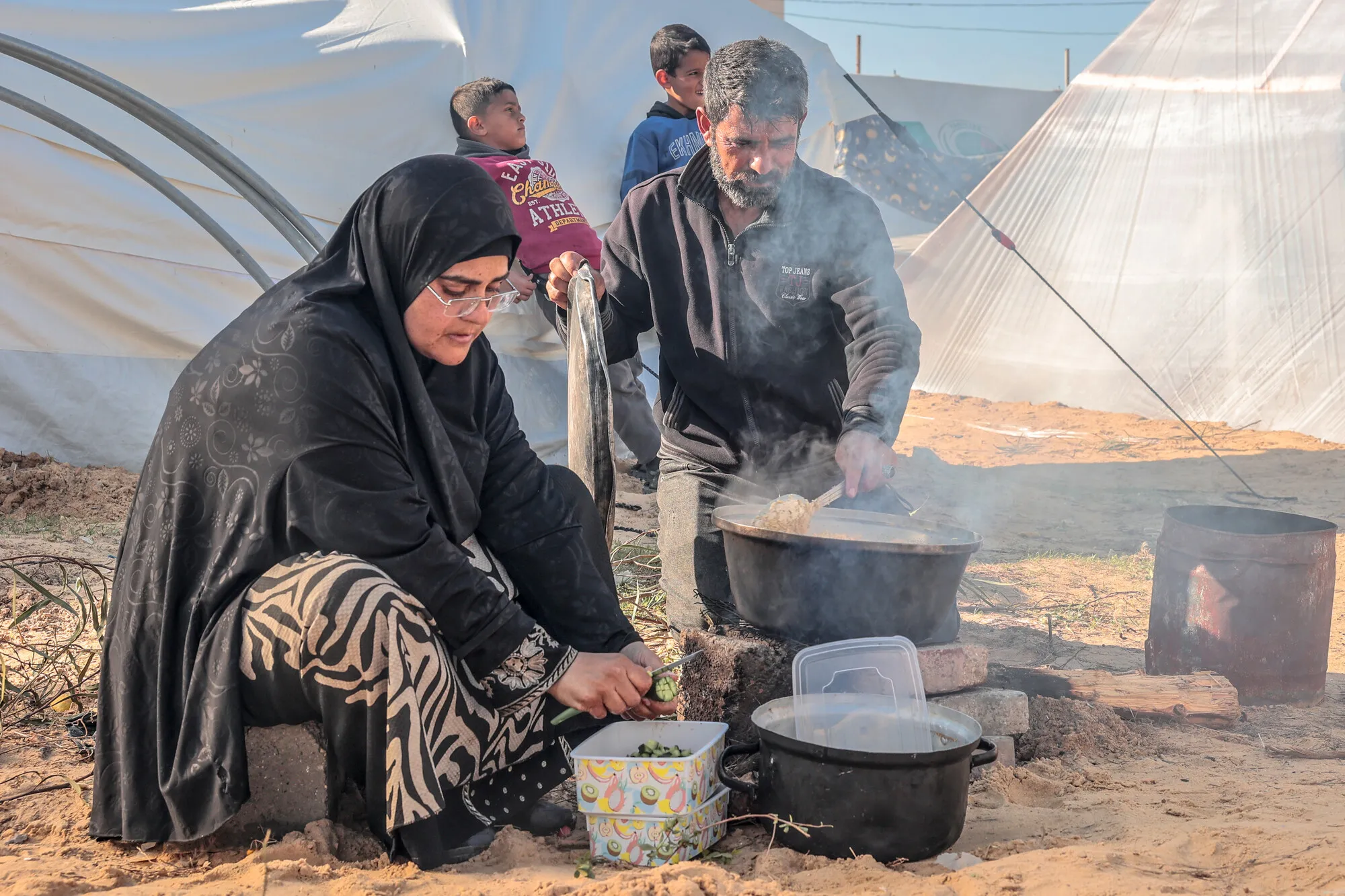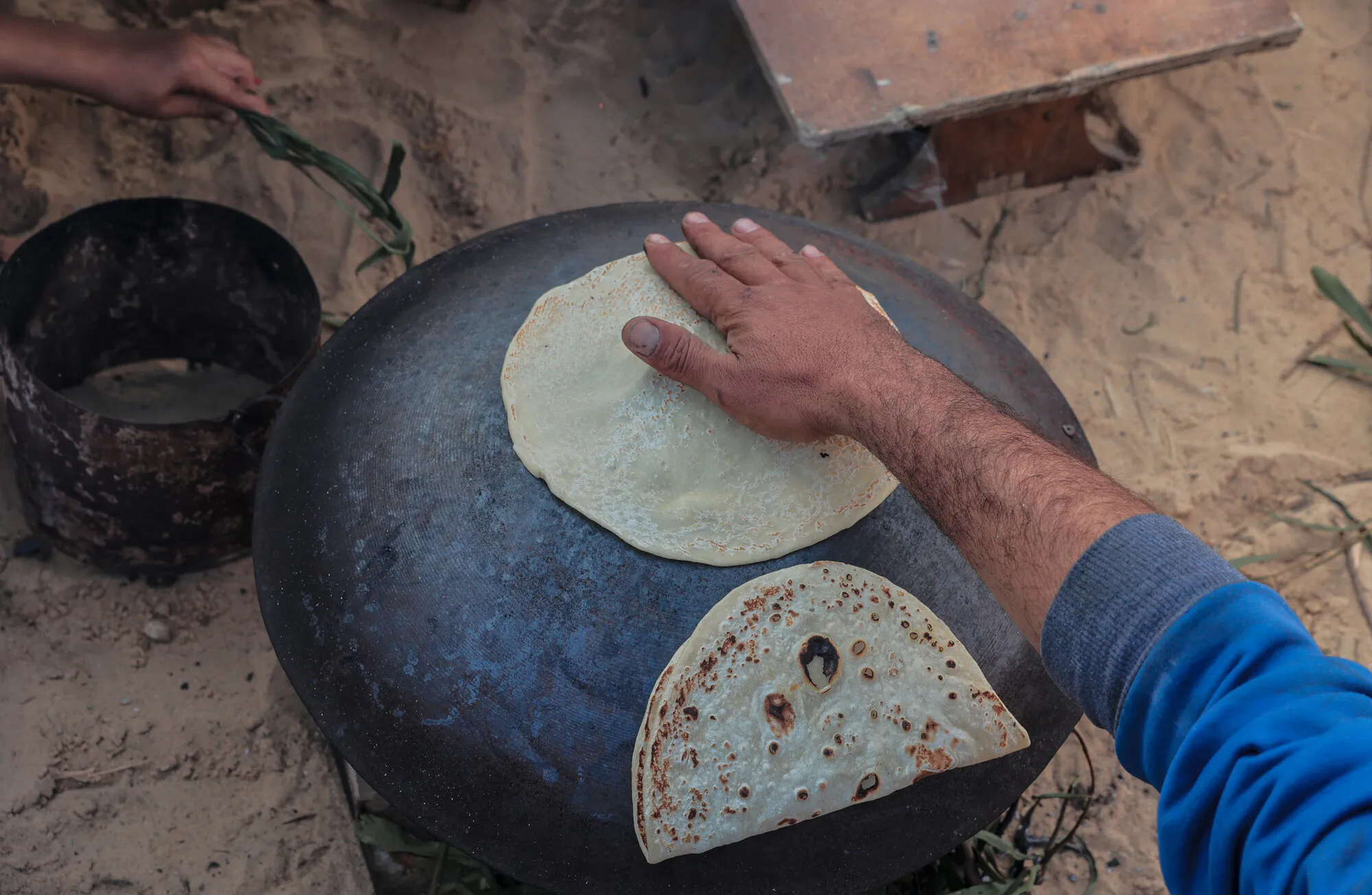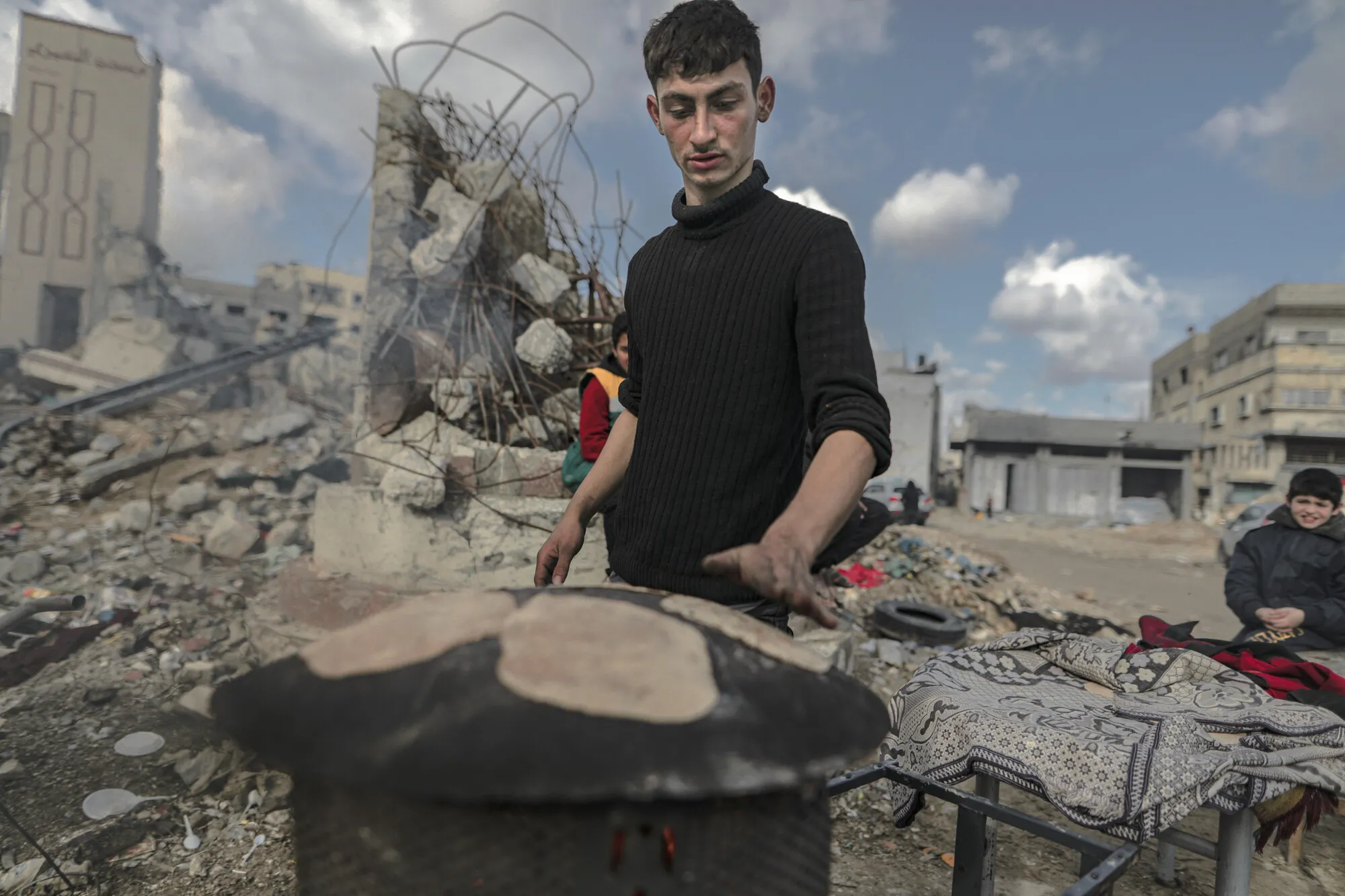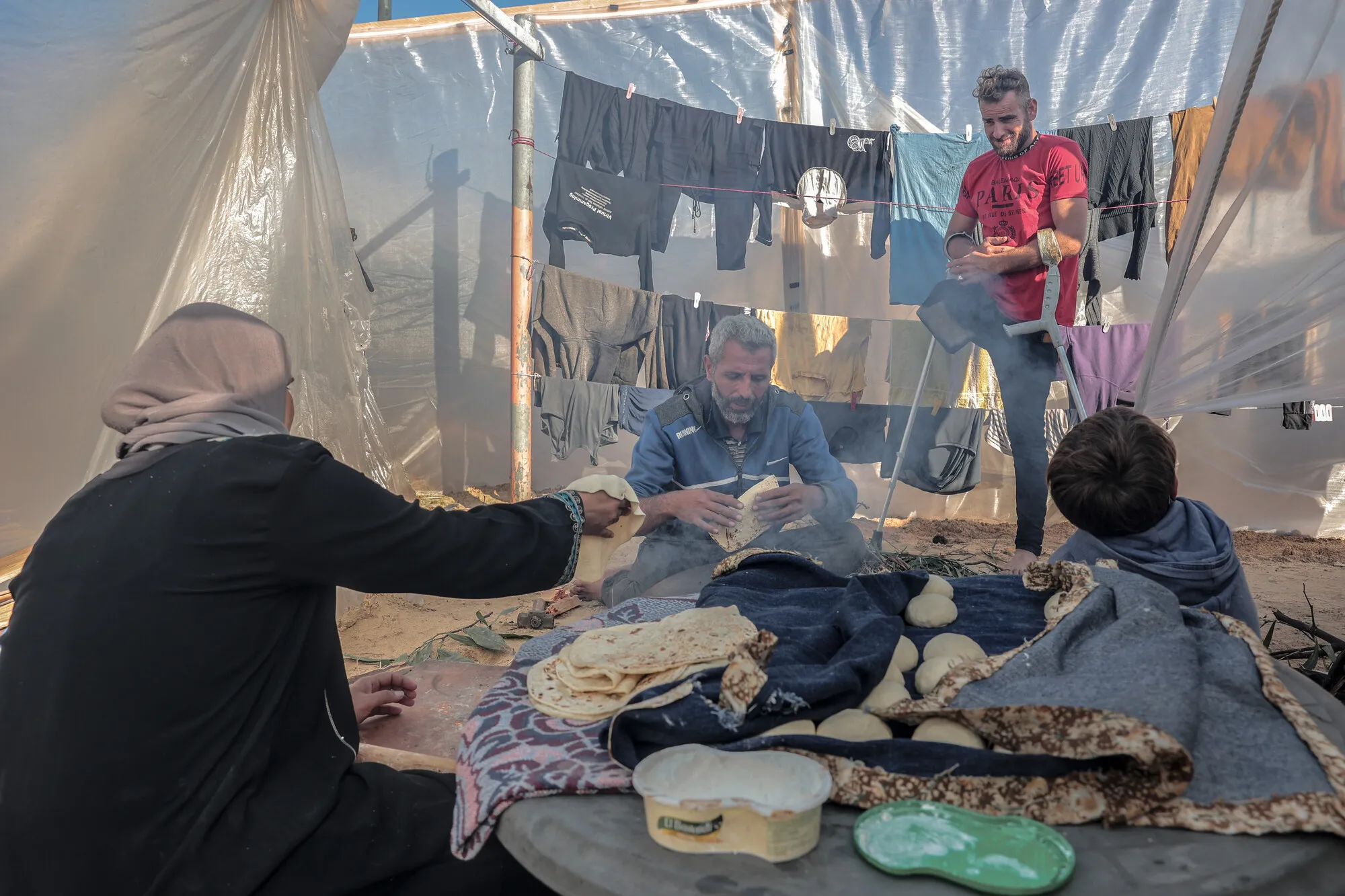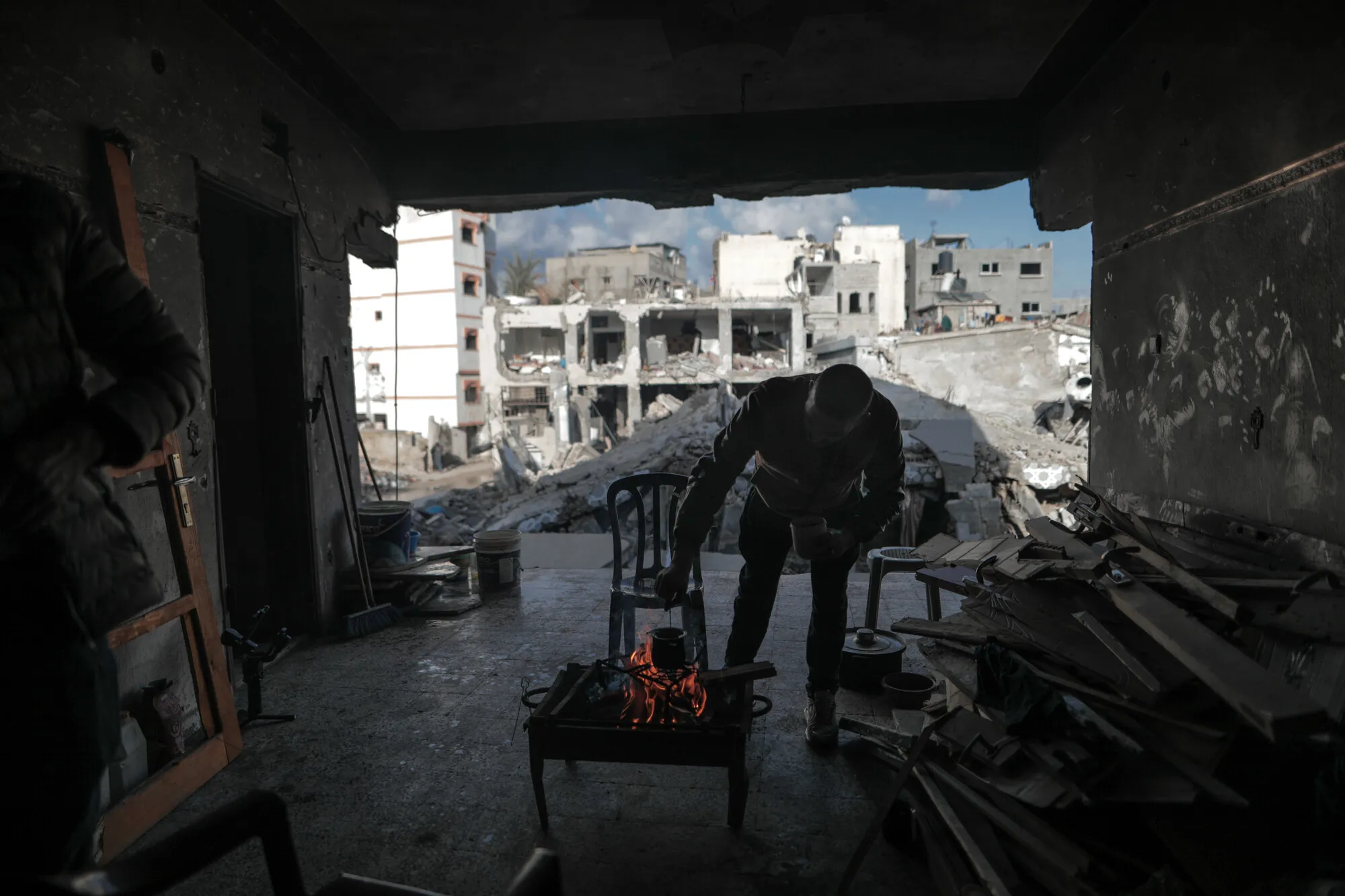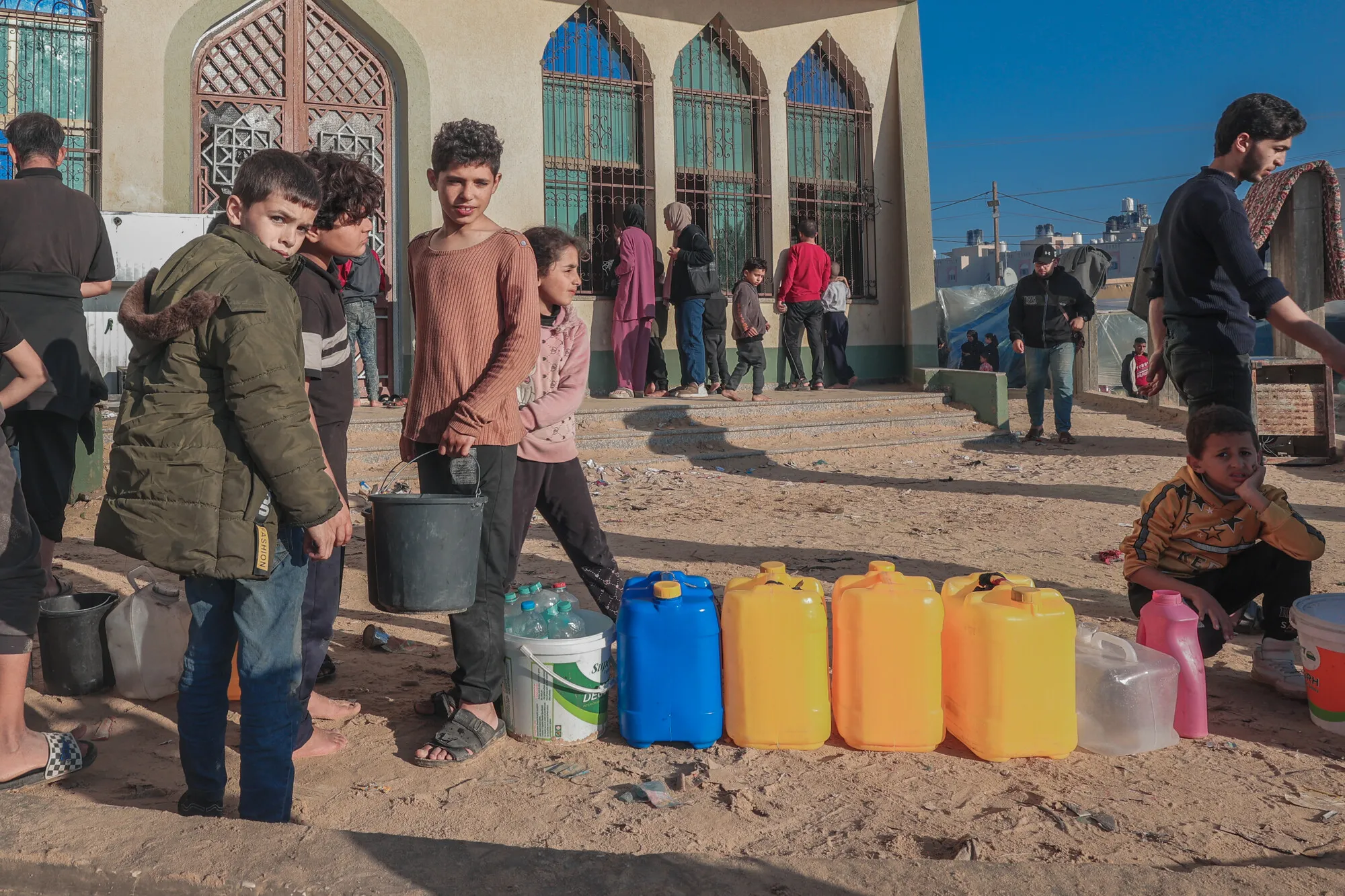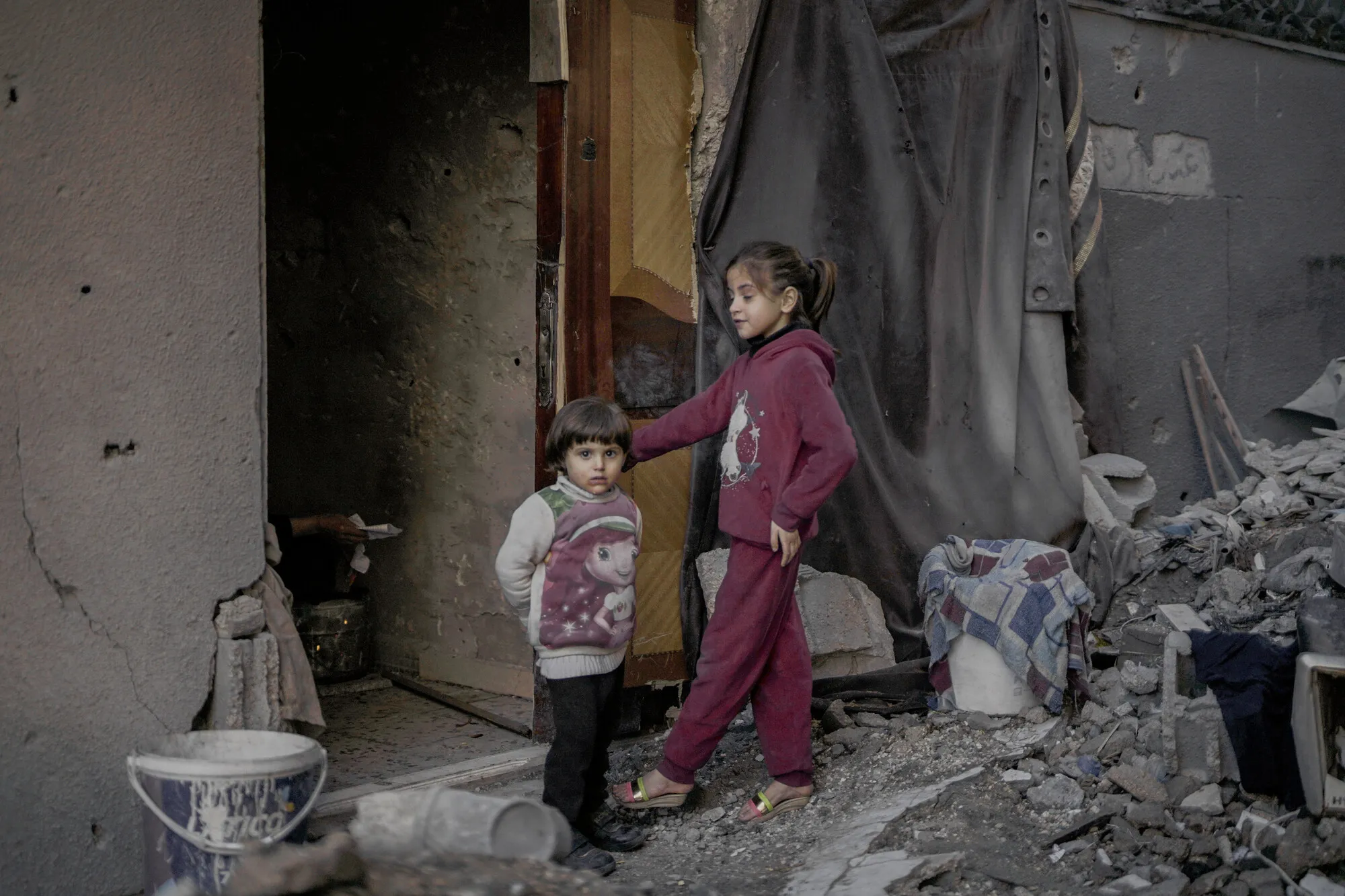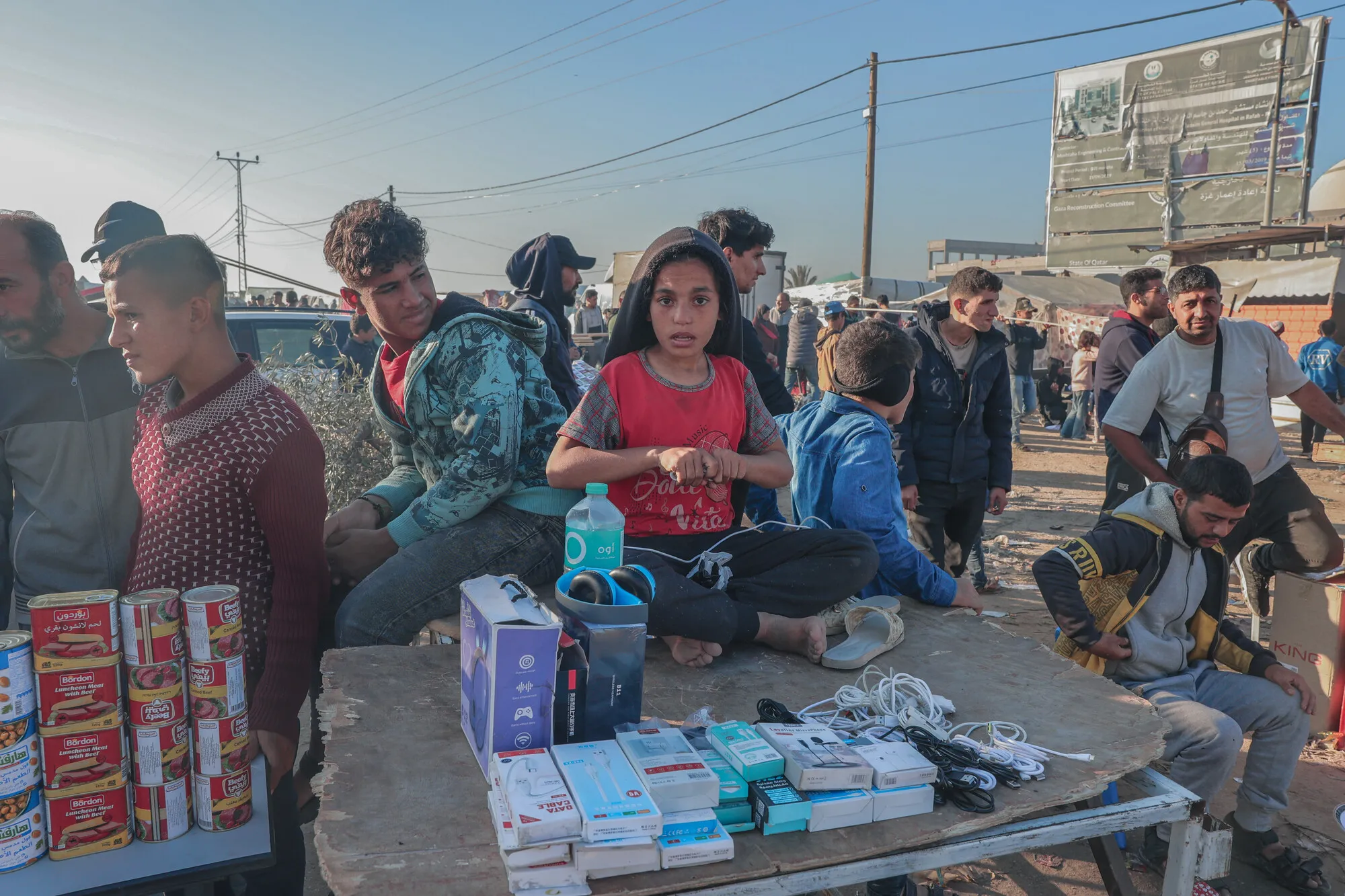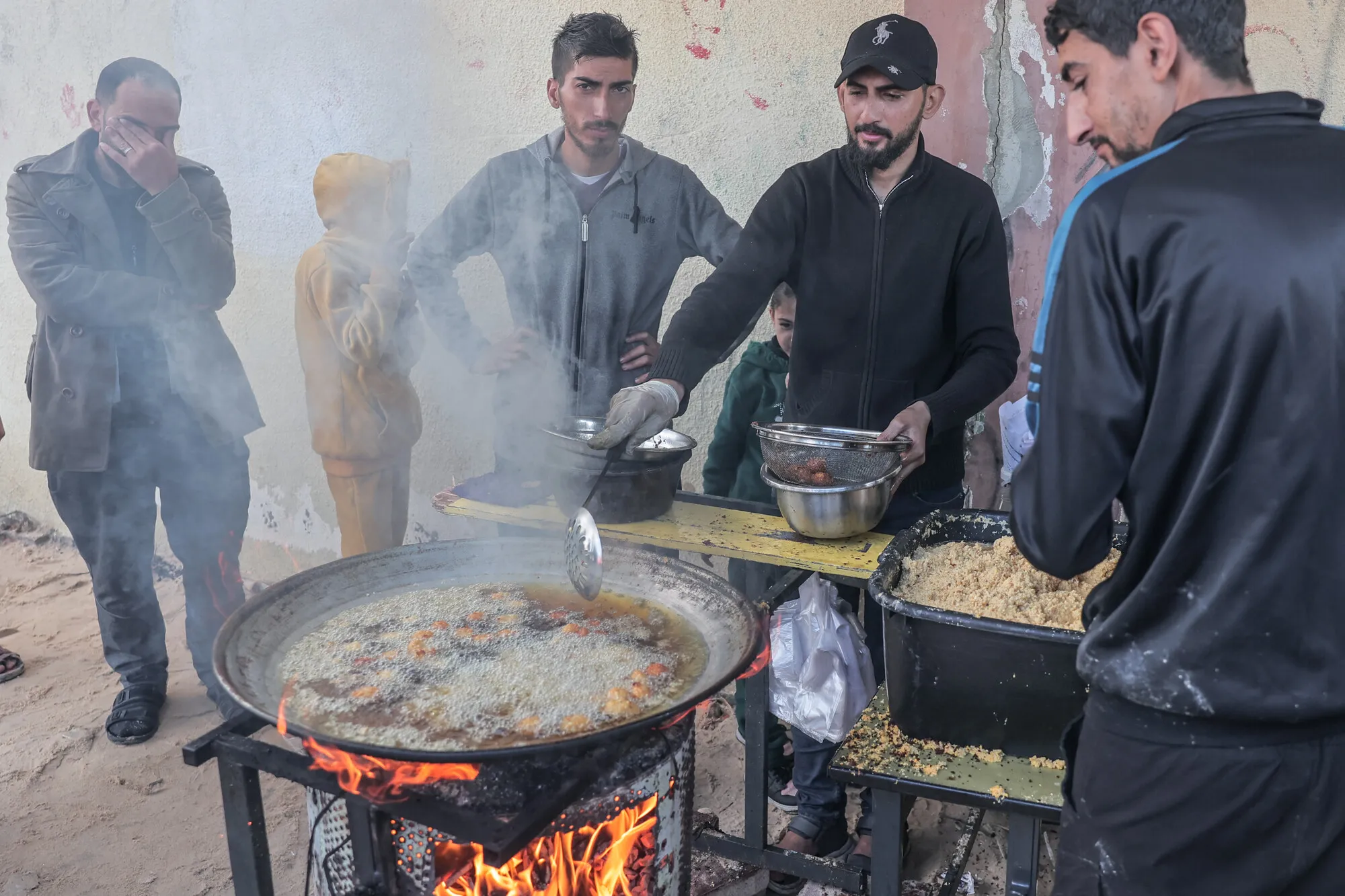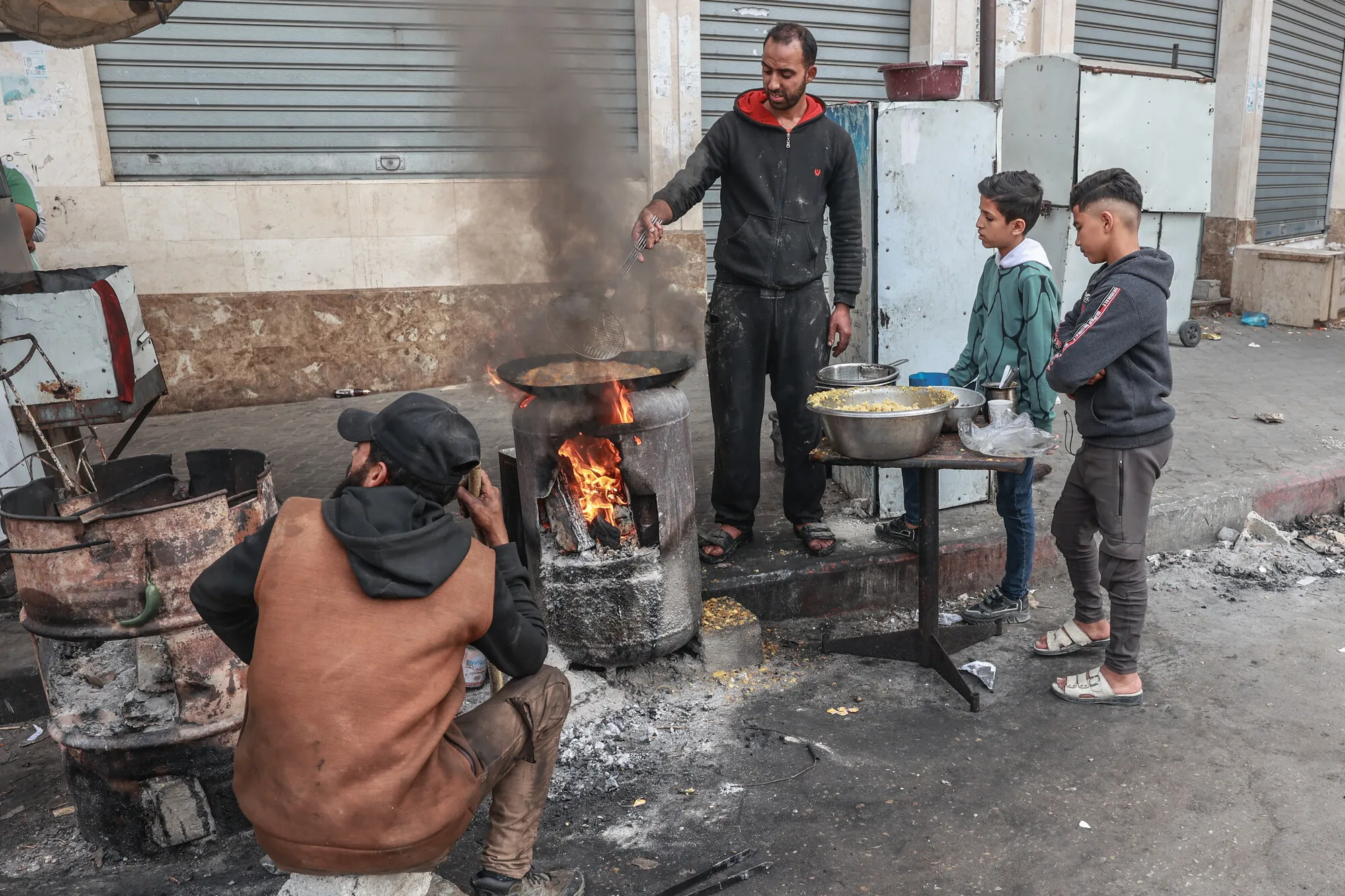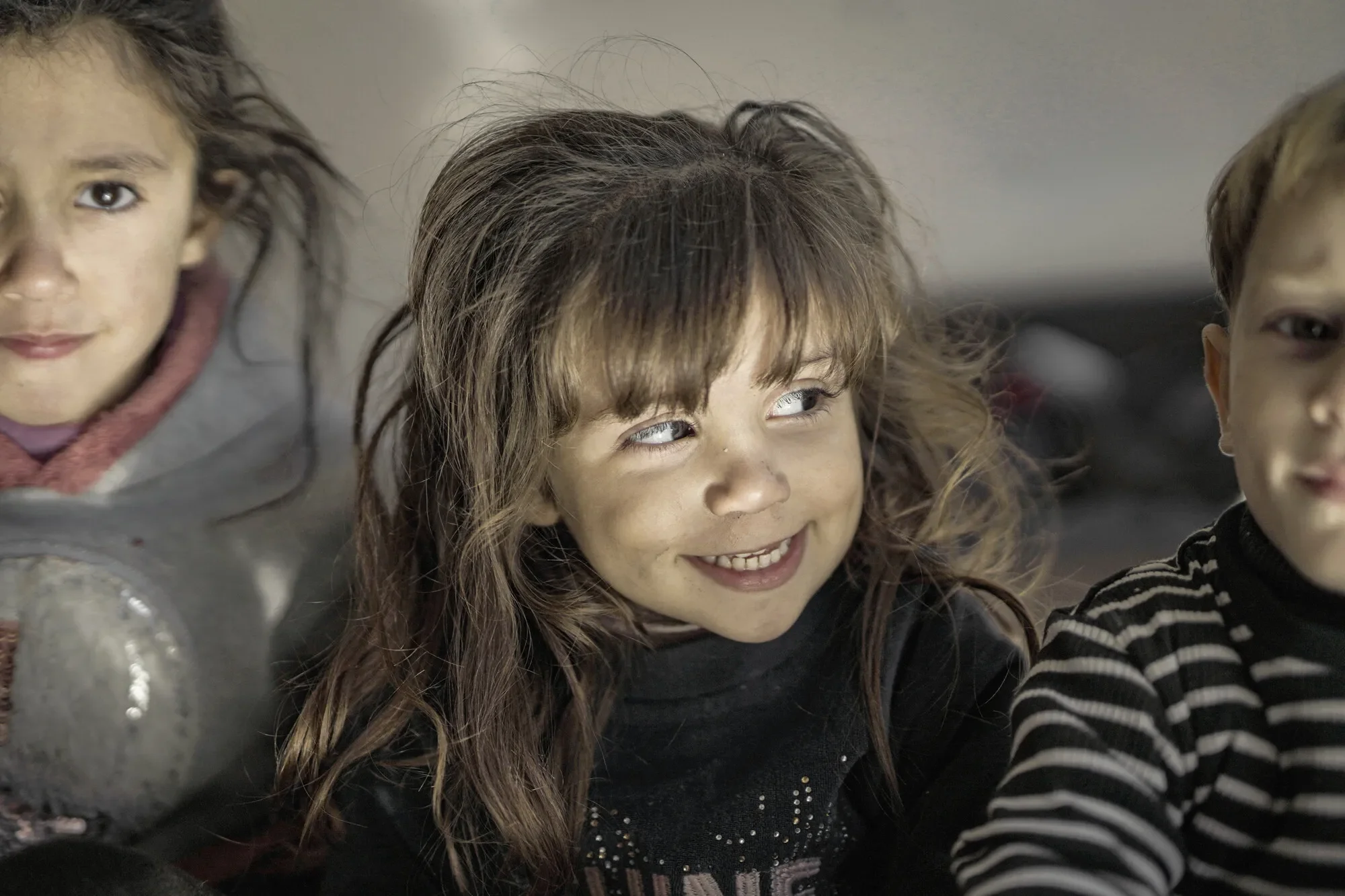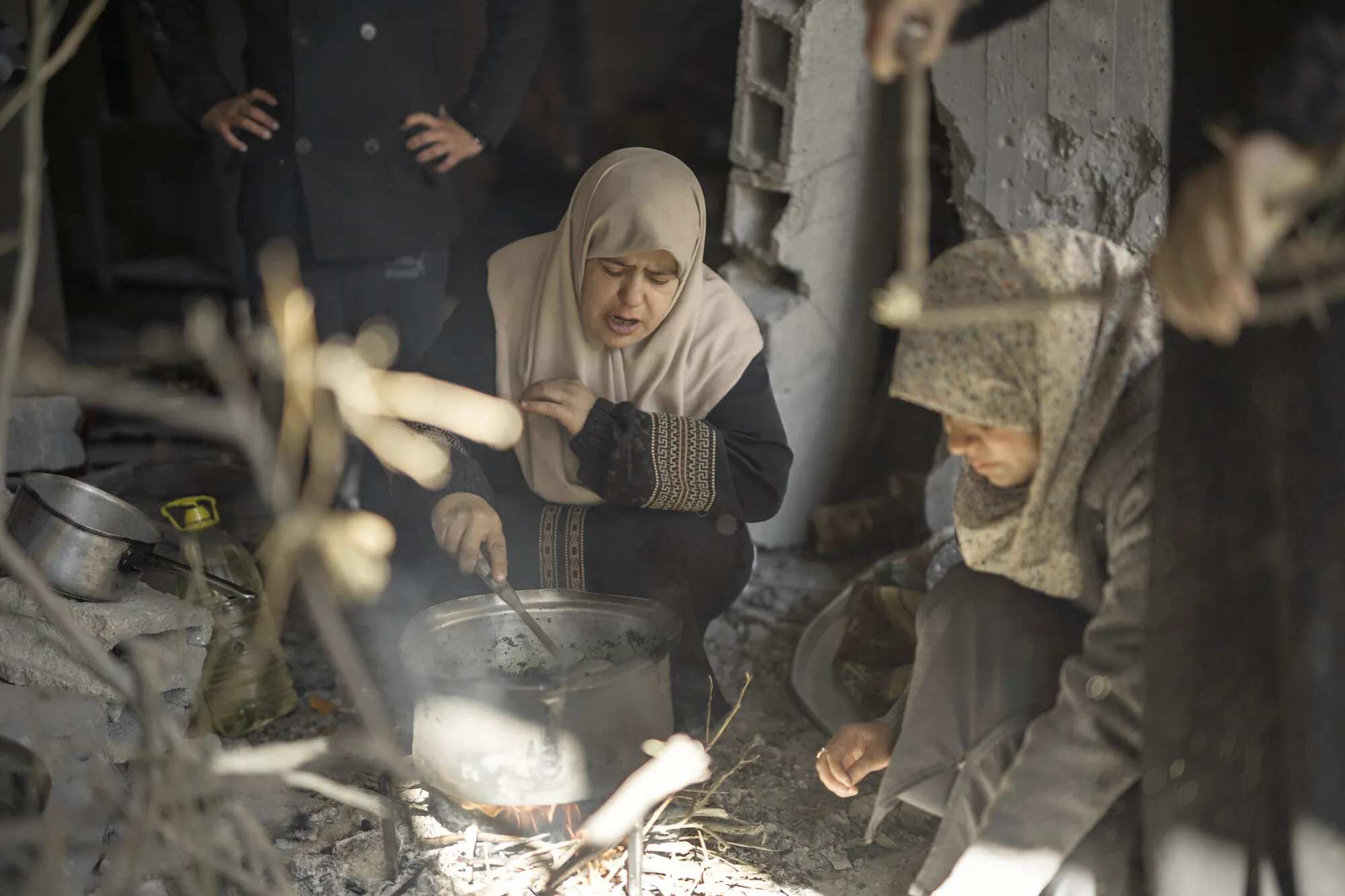He and his family currently live in a makeshift camp in Tal al-Sultan, on the Egyptian border. Their home is a tent constructed from plastic sheets.
When the airstrikes started, they fled their home in the al-Shati refugee camp in Gaza City, leaving behind all their possessions, only to end up here, in another refugee camp in the southern Gaza Strip.
For the people of Gaza, like Abu Mohammed and his family who are suffering unprecedented levels of food insecurity, this search for food and the fuel to cook it is a daily struggle.

